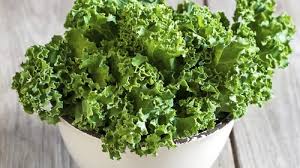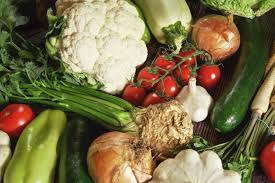For a health boost, consider consuming these eight vegetables raw, which you may not have realized were suitable for raw consumption.
While cooked veggies like creamy mashed potatoes and buttery sweetcorn or rich tomato soup and miso-glazed aubergine can be delicious, you might be surprised to learn that in certain instances, opting for raw vegetables can offer greater health benefits.
According to functional nutritionist Pauline Cox, author of ‘Hungry Woman: Eating For Good Health, Happiness And Hormones,’ cooking vegetables can deplete some heat-sensitive nutrients, such as vitamin C.
“Roasting and cooking can lead to the loss of beneficial enzymes present in raw vegetables.”
During the summer months, fresh vegetables can be especially enticing, perfect for filling salads and providing crunchy snacks.
“By incorporating more raw vegetables into your daily meals, you can elevate your dining experience,” advises Cox.
Regardless of whether you choose to eat vegetables raw or cooked, it’s essential to properly clean and prepare them.
“Always wash vegetables thoroughly before consumption to minimize exposure to pesticide residue or harmful bacteria,” recommends Maz Packham, a nutritional therapist and the founder of Nourishful Nutrition.
Below, experts discuss eight delicious vegetables that can be enjoyed raw.
1. Sweet potato

“Sweet potatoes, commonly enjoyed oven-baked, roasted, or mashed, can also be eaten raw,” notes Cox.
However, to enhance its taste, it’s advisable to grate the flesh: “When grated into a slaw, sweet potatoes provide a rich source of beta carotene, vitamin C, and fiber.”
2. Kale

“In recent years, baked kale chips have gained popularity among health-conscious individuals seeking innovative ways to incorporate the vitamin-packed leaves into their diets.
“Some people find kale easier to digest after it’s been sautéed or steamed,” notes registered nutritionist Jenna Hope. “Alternatively, massaging raw kale with olive oil can aid digestion while retaining its vitamin C content.
“Moreover, the addition of olive oil can enhance the absorption of fat-soluble vitamins like vitamin K, which is abundant in kale.”
3. Sugar snap peas

“Unlike certain varieties of peas, sugar snap peas do not require shelling and are rich in vitamins C and K.
“Vitamin C acts as a potent antioxidant essential for collagen production, iron absorption, and a robust immune system,” explains Packham.
“Moreover, sugar snap peas provide a good dose of vitamin K and folate, commonly found in green vegetables. Additionally, they are a valuable source of fiber, promoting the growth of beneficial gut bacteria and supporting digestive health.”
They make a delicious snack on their own or dipped in hummus.
“You may want to break off the ends and remove the outer string that runs along the side; you may not even notice it,” Packham continues.
“Cut the pods into smaller segments and mix into salads for extra texture and crunch.”
4. Celeriac

Abundant in vitamin K, celeriac could potentially enhance bone health, as increased vitamin K intake is linked to reduced fracture risk,” Cox recommends.
Before use, remove the tough outer peel by grating, slicing into ribbons with a vegetable peeler, or chopping into small pieces.
“Gentle in taste yet brimming with nutrients, celeriac is an excellent choice for salads,” Cox suggests.
“Thinly sliced into matchstick-sized strips and combined with olive oil, mayonnaise, and a touch of mustard, celeriac can elevate any dish as a delectable side
5. Cauliflower

“Cauli is bursting with vitamin C, vitamin K and dietary fibre,” says Cox.
She recommends: “Raw cauliflower makes a great dunker for a delicious guacamole or hummus.”
However, if you have any digestive health issues you should be cautious with cruciferous vegetables like cauliflower.
“They can cause excess gas as they contain an indigestible fibre called raffinose,” says Rob Hobson, registered consultant nutritionist at Healthspan.
“Bacteria try and break this down in the large intestine and in the process produce gas. This could be an issue for people suffering from irritable bowel syndrome (IBS) as it can exacerbate symptoms.”
6. Baby corn

While full-size corn cobs are way too tough to consume whole, baby corn (harvested before the stalks mature) is soft enough to munch whole.
“Despite its size, baby corn is nutritionally rich containing vitamins A and C as well as folate and potassium,” says Packham.
“The high fibre content helps support a healthy gut while also helping you to feel fuller for longer.”
You can slice the stalks to add to salads or serve them as crudites, Packham suggests: “Baby corn is a great snack option and can be left whole – it tastes delicious dipped into hummus or guacamole.”
7. Courgette
“Courgettes are rich in vitamin C and B6, which can also be degraded by high heat,” says Hope, and because it’s got a semi-firm texture it’s easy to adapt for raw dishes.
Hope adds: “Try slicing up your courgettes and using them as an alternative to cucumber in salads, or sliced up and dipped into hummus or guacamole.”
8. Brussels sprouts

Not a fan of the classic Christmas dinner side dish?
“Trying them raw might just see you developing a newfound love for the humble Brussels sprout,” says Cox, recommending the brassica as a rich source of vitamins C and K.
“Thinly sliced and treated like shredded lettuce, glug on a generous dose of avocado oil or olive oil and a few chopped pecans or walnuts and finish with some fresh, grilled goat’s cheese – this combo may well win you over!”
As Brussels sprouts are cruciferous, the same warning applies to cauliflower for people with IBS.
Hobson adds: “They contain compounds called glucosinolates which can reduce the absorption of iodine which could interfere with thyroid function.
“People with underactive thyroid may want to limit their intake of these compounds. Cooking them lowers the levels of glucosinolates.”






